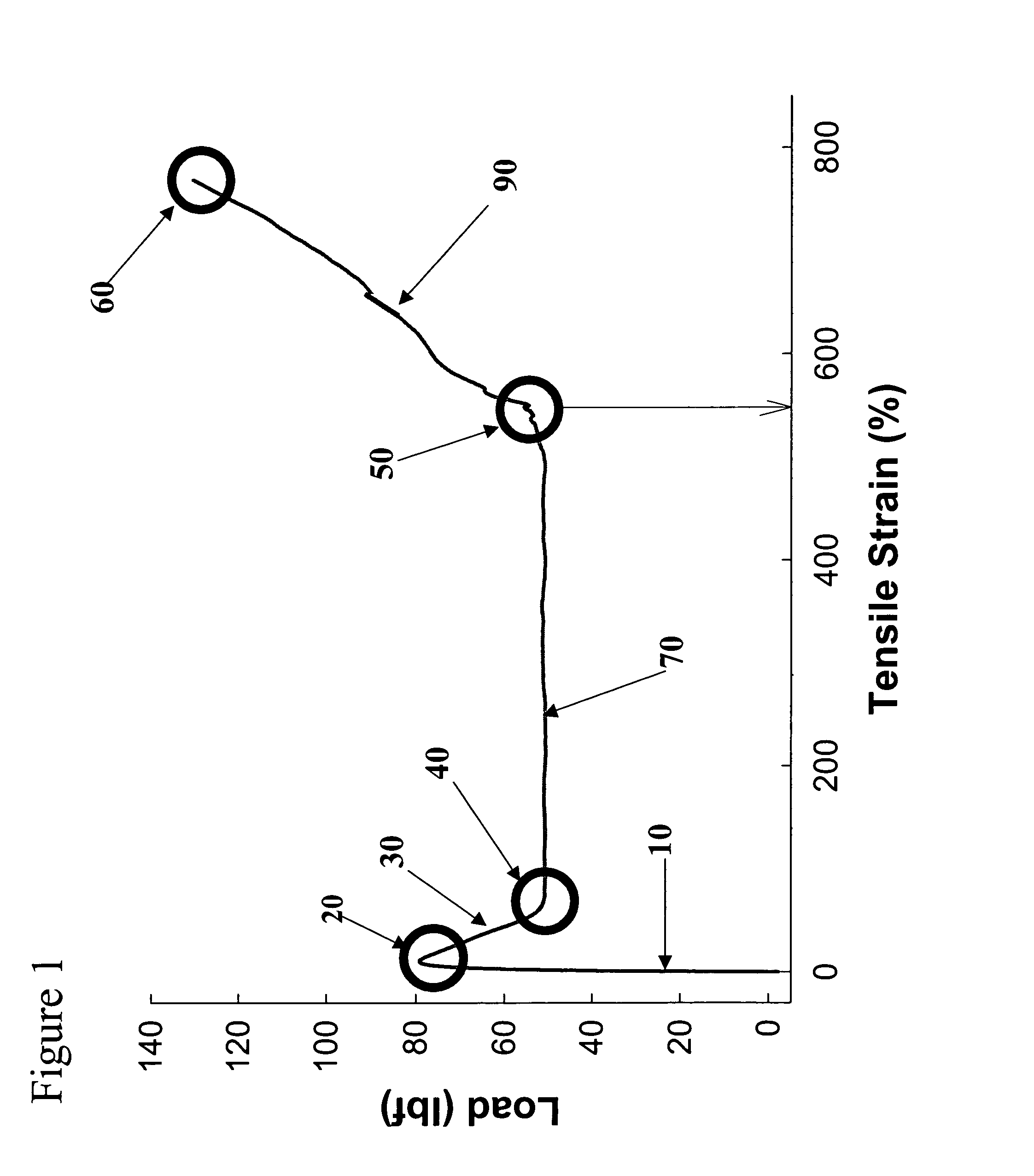Polyethylene compositions and pipe made from same
a technology of polyethylene compositions and pipes, applied in the field of polyethylene compositions, can solve problems such as expensive repair of cracks or breaks, and achieve the effect of high load melt index
- Summary
- Abstract
- Description
- Claims
- Application Information
AI Technical Summary
Benefits of technology
Problems solved by technology
Method used
Image
Examples
example 1
[0068]Alumina A, from W.R. Grace Company, was impregnated to incipient wetness with an aqueous solution of ammonium sulfate. Typically, the alumina had a surface area of about 330 m2 / gram and a pore volume of about 1.3 cc / gram. The amount of ammonium sulfate used was equal to 20% of the starting alumina. The volume of water used to dissolve the ammonium sulfate was calculated from the total pore volume of the starting sample (i.e. 2.6 mLs of water for each gram of alumina to be treated). Thus, a solution of about 0.08 grams of ammonium sulfate per mL of water was employed. The resulting wet sand was dried in a vacuum oven overnight at 120° C., and then screened through a 35-mesh screen. Finally, the material was activated in a fluidizing stream of dry air at 550° C. for 3 hours, in the case of bench scale samples, or 6 hours, for the larger pilot plant samples. The samples were then stored under nitrogen.
[0069]The PE compositions of Table 1 of this disclosure were produced in a 27.3...
example 2
[0075]The differential weight fraction MWD was determined for the PE compositions prepared under conditions specified in Table 1 are shown in FIG. 2 respectively. The figures show the resulting PE compositions to have two peaks corresponding to a bimodal PE composition.
example 3
[0076]Select mechanical properties of the PE compositions of this disclosure (Table 1) along with a few commercially available pressure pipe-grade HDPE resins are listed in Table 2. The tensile NDR of the PE compositions of this disclosure were determined as a function of their density, yield stress and HLMI. In all cases tensile tests of the PE compositions (compression molded by slow cooling from the molten state) were performed using die-cut ASTM Type IV specimens using an Instron tensile tester. Tests at room temperature were performed in accordance with ASTM D 638-00 using a crosshead speed of 51 mm / min.
[0077]
TABLE 2CharpyTensileTensileTensileImpactHigh-YieldBreakNDREnergyStressDensityStressStress(Percent@ 23° C.CharpyPENTPENTResin ID(g / cc)(MPa)(MPa)Strain)(J)Tdb (° C.)(h)(h)TR480X0.94322.931.0569.9HiD93460.94623.731.8617.10.34−20~1000~450H5160.95025.540.0549.11.90−35~3000~500DOW24900.94925.837.1531.01.70−35~5000~2200Inventive0.95427.032.3512.41.28−35>7000>7000Run 1Inventive0.9...
PUM
| Property | Measurement | Unit |
|---|---|---|
| density | aaaaa | aaaaa |
| load melt index | aaaaa | aaaaa |
| failure time | aaaaa | aaaaa |
Abstract
Description
Claims
Application Information
 Login to View More
Login to View More - R&D
- Intellectual Property
- Life Sciences
- Materials
- Tech Scout
- Unparalleled Data Quality
- Higher Quality Content
- 60% Fewer Hallucinations
Browse by: Latest US Patents, China's latest patents, Technical Efficacy Thesaurus, Application Domain, Technology Topic, Popular Technical Reports.
© 2025 PatSnap. All rights reserved.Legal|Privacy policy|Modern Slavery Act Transparency Statement|Sitemap|About US| Contact US: help@patsnap.com



